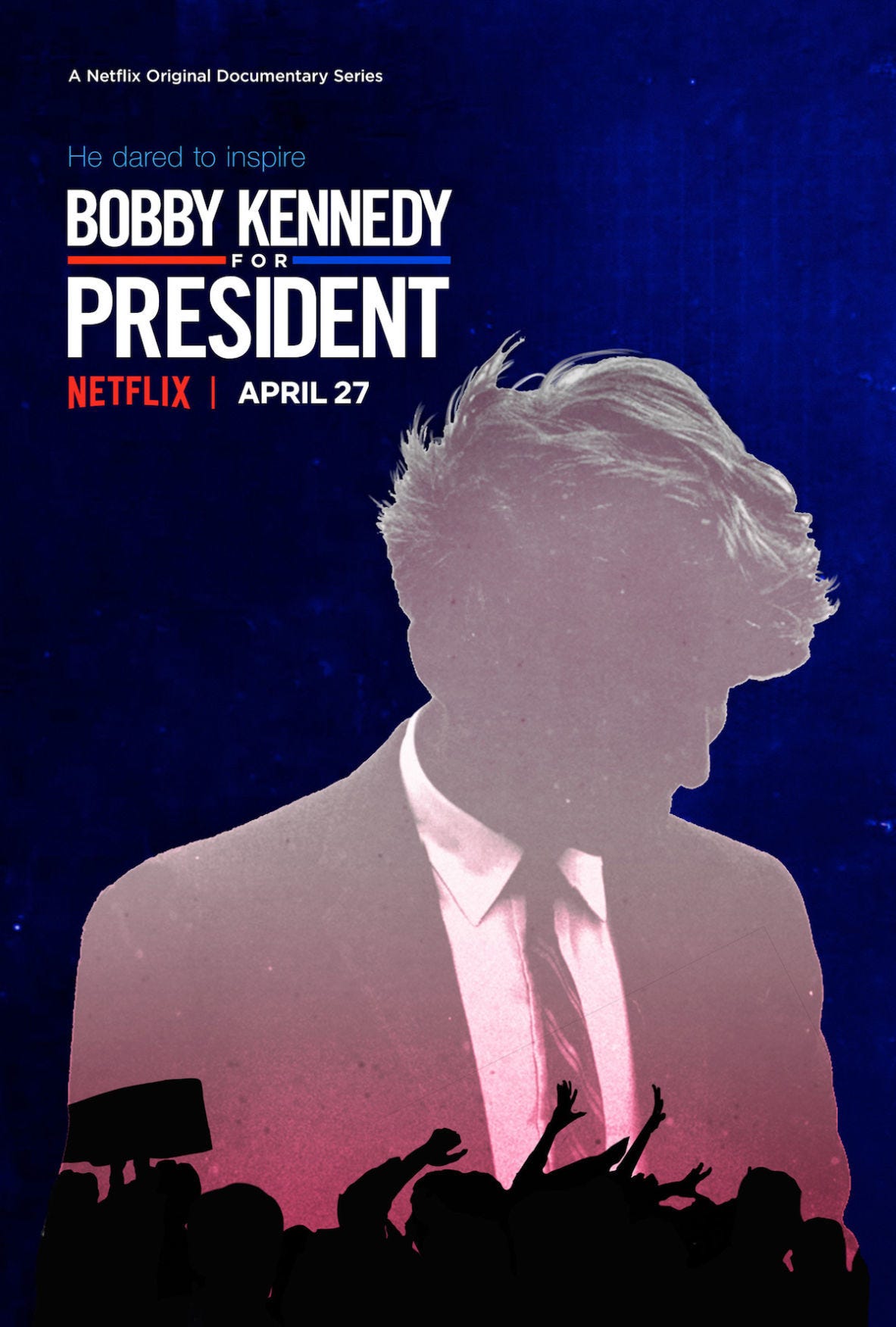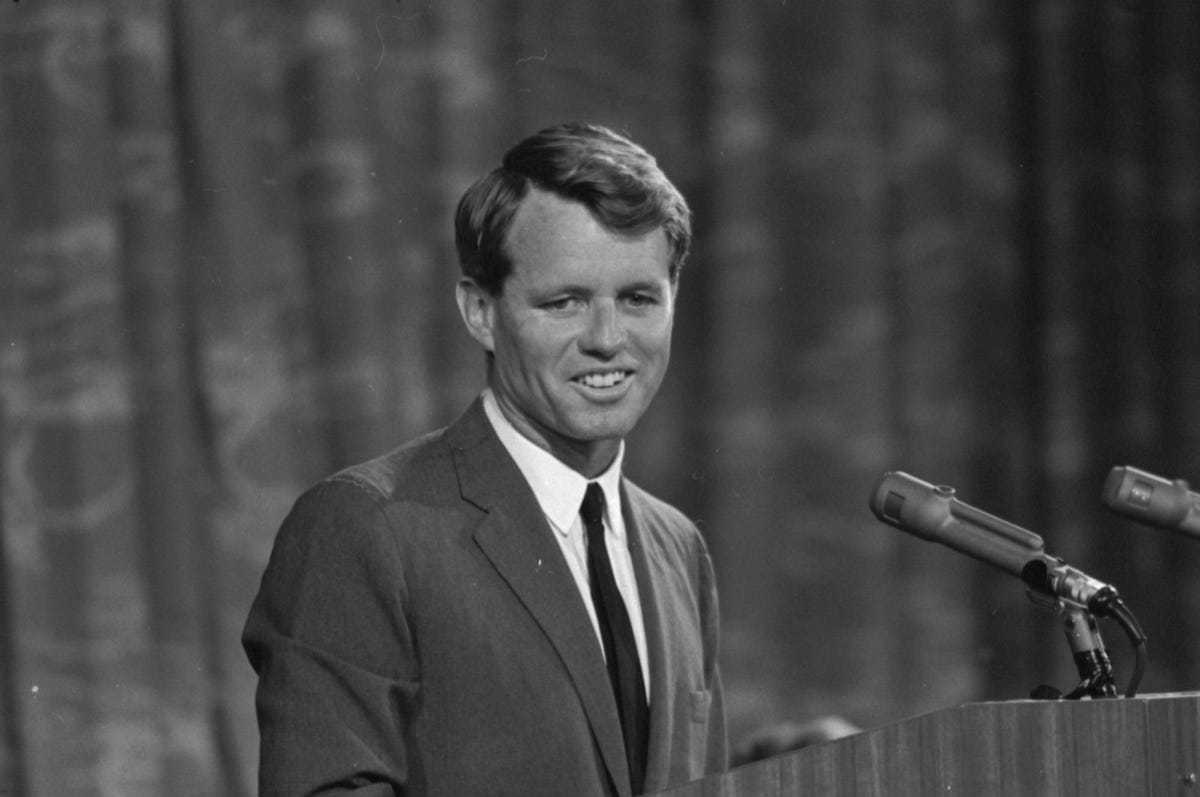Bobby Kennedy for President: Interview with Dawn Porter About Her Netflix Series
Posted on May 18, 2018 at 8:32 am

Dawn Porter’s four-part Netflix series, “Bobby Kennedy for President,” examines the life of one of the central political figures of the 1960’s. In an interview, she described the process of collecting the extraordinary and surprisingly intimate archival footage and her interviews with people who worked closely with Bobby Kennedy and are still deeply moved by the experience.
They say that history doesn’t repeat itself but it rhymes. I felt like there was a lot of rhyming in this series, which takes place during the politically tumultuous 1960’s. What parallels do you see going on today?
We’re in a really confusing and chaotic era right now where people are choosing sides. The country is never a hundred percent united but it certainly feels as if we are more divided than we have been in recent years. It’s unsettling and I think that it is very similar to the middle through late sixties the series covers. I think the big difference is there was more confidence in the leadership and people felt acutely behind one candidate or the other and so there was confusion and chaos but I don’t know that there was the same amount of fear but more anger I think than in the 1960’s. There was more activism then and I think we’re seeing a more resurgence of that activism, now so I think that’s actually a good thing.
People say today, “oh goodness, it’s never been worse,” but we had the Vietnam War, a huge racial divide, poverty like in the Deep South, assassinations happening routinely, you don’t want to do a misery comparison but you could certainly say that things were as bad or as serious. That’s when we really do value leadership and Kennedy stepped into that role.

If you were making a film about a historical figure from even a decade before you would not have anywhere near the wealth of archival footage that you had here. It was really breathtaking because there were so many scenes where he seemed unaware he was being filmed, not just giving speeches but talking to his staff, being with his family.
I used to work for ABC News and I remember a colleague there telling me that there was all this film footage that had been shot during the time period that I was interested in. So one of the things that I thought would be really effective is to allow the viewers as much as possible to experience the footage themselves, to experience the time. And so there were two things to do. You can see at the beginning there was more black and white, there was more sometimes grainy/sometimes smooth footage. This was a period that coincided with the shift in news coverage. Upstart news entities such as ABC News began shooting in film and shooting in color and sending really gifted cinematographers out to do political coverage. So you get this feeling not only of the candidates but of the era: the clothes, the cars, the light. I think that helps point you in time in a way that still pictures can’t even quite accomplish.
That is why working with Netflix was so great because we convinced them to give us investigation room. We ended up digitizing over 140 hours of news footage and one of the things I’m really, really happy about is that footage is now available to others who want to explore the period for whatever storytelling they’re doing. It was quite a project of discovery in that way but we went through about 2,000 reels of film and our archivist ended up using 100 different sources so it was quite a massive undertaking but once we got our rhythm it was really fun. All the news organizations might cover the same event but they would shoot it differently and so we could have different angles from different news organizations. But 100 percent of that material had to be licensed, so we were constantly trying to figure out what we could afford to actually use.
There was another exciting thing that was happening. It was also the era of growth and excitement about that type of verite filmmaking. So there were filmmakers like D.A. Pennebaker, Robert Drew, like Charles Guggenheim who had sent a bunch of independent cinematographers out to cover Bobby Kennedy. We used all of those sources and got outtakes from them and I even visited Pennebaker and Chris Hegedus in their office and got material from them personally. So there is also quite a bit of film history contained in the series.
I think the most powerful moment in the series is the John Lewis interview.
I wanted to only have interviews with people who worked very closely with Bobby Kennedy, who were either staffers or people like Marian Wright Edelman. We had known that John Lewis was involved with Kennedy and he agreed right away. One of the things that I think was very helpful for these interviews was we would show people footage that was material they hadn’t necessarily seen of themselves as young people and I think that that helped them go back in time and remember. John Lewis is a spectacular interview. He’s very giving, he’s a very open, very, very, very generous and Kennedy was really important to him and he wanted to communicate that. He’s also not a person who is afraid of being emotional and didn’t try and stop it and that was really quite a gift to a project like this.
What do you think is Bobby Kennedy’s most enduring legacy?
I am really moved by his curiosity, his ability to change and grow, his inclusiveness (particularly to minority groups) and this kind of resilience and relentlessness which can be a blessing and a curse but in the end I think he made it a blessing and really refused to give up on things that are too important to give up on.
